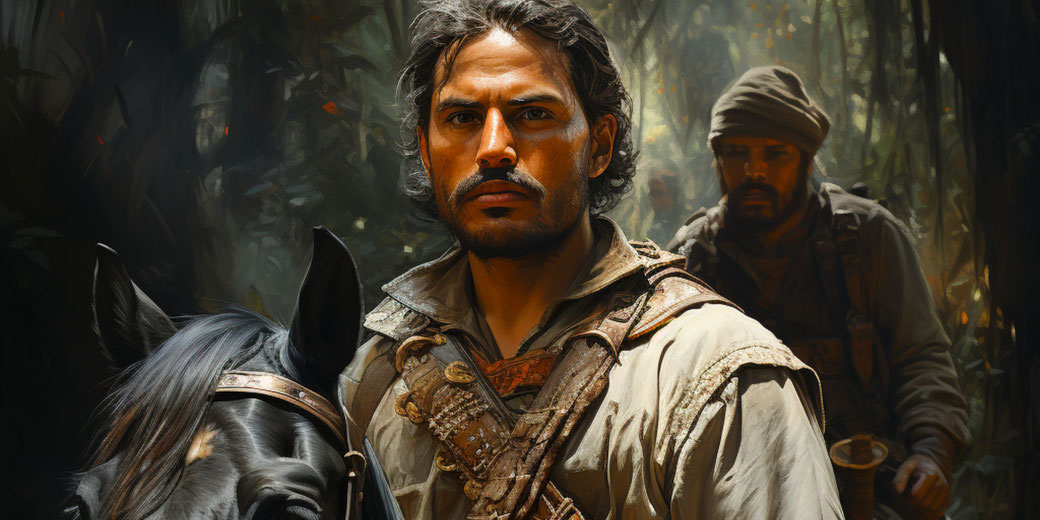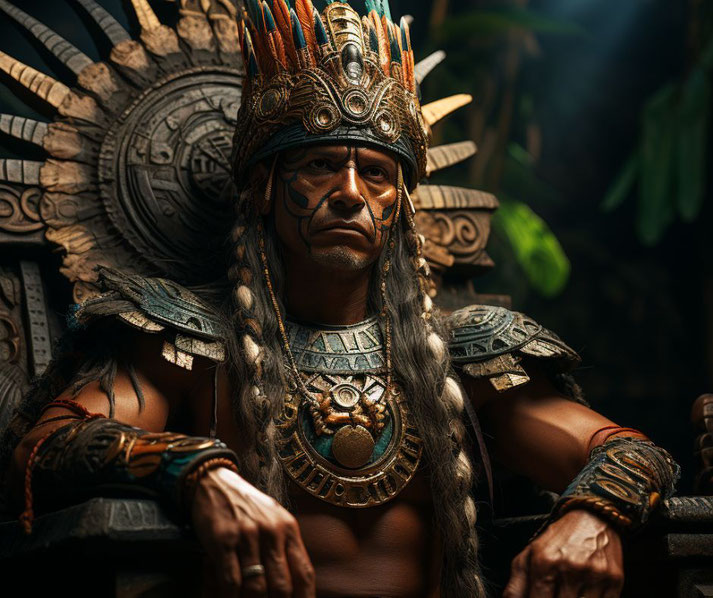What really happened when Cortez met Montezuma: 4 lies we've been told

The encounter between the Spanish explorer Hernán Cortés and the Aztec emperor Montezuma II on November 8, 1519, is one of the most consequential in history, affecting the welfare, beliefs and culture of millions of people living in the Western hemisphere.
But the story has long been told from one side: the Spanish account. It was a tidy narrative that described how Montezuma, on meeting Cortés and his retinue, swiftly surrendered his vast Indigenous empire, recognizing the divine right of the Spanish and the Catholic Church to overtake his lands and people.
When violent rebellion ensued, the story goes, the Spanish retreated with hordes of gold, then returned and laid siege to the Aztec capital, securing their rightful conquest and adding to the glory of Spain with its mammoth new territory, which came to be known as Mexico.
But that account was laden with personal and political agendas. New scholarship and accounts from the Aztecs and their descendants have cast new light on the meeting that changed the course of continents.
Here are four myths about the Aztecs, Montezuma and what really happened when the Spanish arrived.
Myth 1: Montezuma Was a Weak, Unsophisticated Leader
The Aztec Empire that ruled over Central Mexico from 1429 to 1521 was a triple alliance between the Indigenous Nahua city-states of Tetzcoco, Tlacopan and Tenochtitlán.
More than 500 small states comprised of an estimated 6 million people lived under the alliance’s rule.
Montezuma was named huey tlahtoani, or king, of Tenochtitlán on September 15, 1502. “He was a warrior and well-respected military leader who maintained a vibrant city and culture, both politically and economically,” says Buddy Levy, author of Conquistador: Hernán Cortés, King Montezuma, and the Last Stand of the Aztecs.
Montezuma’s empire grew in size, status and wealth despite three years of famine and three earthquakes—disasters that would topple a weaker leader.
Tenochtitlán was twice as large as Seville, the prosperous capital of southern Spain, but with a population as much as 10 times the size.
Its dazzling location on an island in the center of Lake Texcoco—along with its towering pyramids and temples, vast plazas and canals that locals traversed by canoe—inspired wonder in the visiting Europeans, who had never seen a city of this scale.
In a letter to Spain’s King Carlos V, Holy Roman Emperor, Cortés described bridges where “10 horses can go abreast,” and public squares with markets selling food and “jewels of gold and silver.”

Myth 2: Montezuma Thought Cortés Was a God
Historians long held that the Aztecs had feared and expected the return of another important deity—Quetzalcóatl, the white, bearded god who would rule over the empire—and that the white, bearded Cortés was aware of this fear and used it to his advantage in his expedition across Mexico.
Some 21st- century historians, however, questioned not only whether the Aztecs thought Cortés was a god but whether the legend of Quetzalcóatl was really a part of the Aztecs’ belief system.
They suggested the well-known version of this story was a Spanish creation that was subsequently incorporated into Aztec lore.
According to Levy, there is no evidence that Montezuma thought Cortés was Quetzalcóatl or any other god.
Rather, he says, Montezuma was curious about these strange visitors who arrived on large ships with horses and guns.
He also wanted to avoid a direct confrontation with them until he knew more about their intentions and capabilities.
He sent them gifts of gold and silver to appease them and to test their greed. He also consulted his priests and astrologers for guidance on how to deal with them.
Myth 3: Montezuma Surrendered His Empire to Cortés
When Cortés arrived at Tenochtitlán on November 8, 1519, he was welcomed by Montezuma with great pomp and ceremony.
The emperor gave him lavish gifts and accommodations in one of his palaces. He also allowed him to meet with some of his nobles and generals.
Some historians have interpreted this as a sign of Montezuma’s submission to Cortés, but others have argued that it was a clever strategy to keep him under control and to learn more about his weaknesses.
Montezuma did not surrender his empire or his authority to Cortés. He remained the ruler of Tenochtitlán and continued to govern his people.
He also tried to limit Cortés’ influence by restricting his access to other cities and regions.
He even ordered some of his allies to attack the Spanish in their rear as they approached the capital.
Montezuma was no one’s prisoner; he was murdered. His body never desecrated by his own people.
Myth 4: Montezuma Died at the Hands of His Own People
After the meeting, Cortés realized it was a trap and, instead, made the emperor his prisoner, believing that the Aztecs would not attack as long as he held Montezuma captive.
Montezuma’s submission to the Spaniards, however, had eroded the respect of his people.
According to Spanish accounts, he attempted to speak to his subjects and was assailed with stones and arrows, suffering wounds from which he died three days later.
But this version of events has been challenged by some historians who claim that the Spanish accounts were fabricated to cover up their own responsibility for Montezuma’s death.
They argue that the Spaniards killed Montezuma either deliberately or accidentally during a scuffle, and then blamed the Aztecs for it.
They also point out that the Aztecs would not have attacked their own king, who was considered sacred and inviolable.
Moreover, they note that the Spaniards never produced Montezuma’s body or gave him a proper burial, which suggests that they wanted to hide the evidence of their crime.
The enduring mystery of history
The truth about what happened when Cortés met Montezuma may never be fully known, but it is clear that it was not a simple or straightforward encounter.
It was a complex and tragic clash of cultures, values and interests that shaped the history of two continents and their peoples.
What do you need help with?
Download ready-to-use digital learning resources
Copyright © History Skills 2014-2024.
Contact via email
With the exception of links to external sites, some historical sources and extracts from specific publications, all content on this website is copyrighted by History Skills. This content may not be copied, republished or redistributed without written permission from the website creator. Please use the Contact page to obtain relevant permission.





